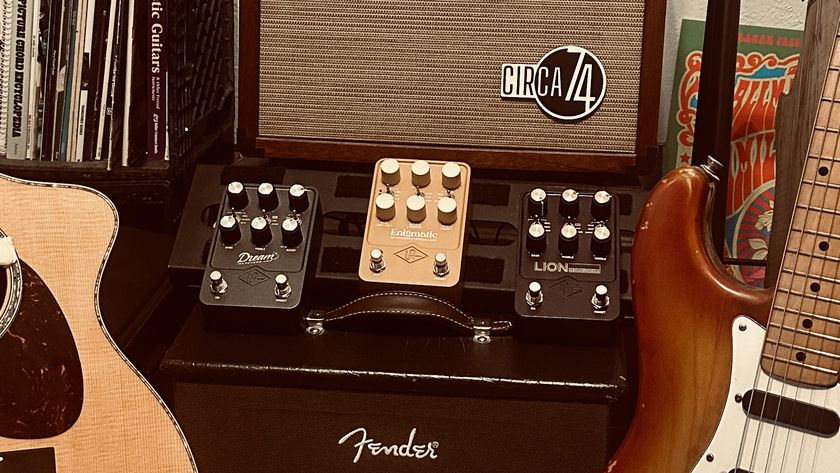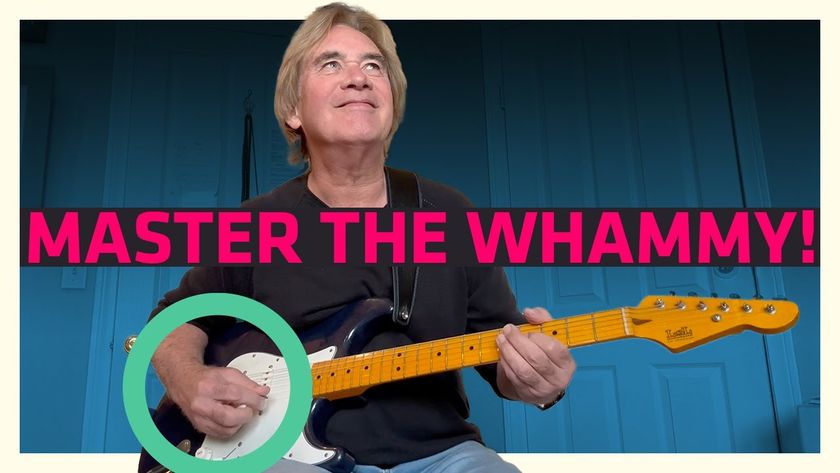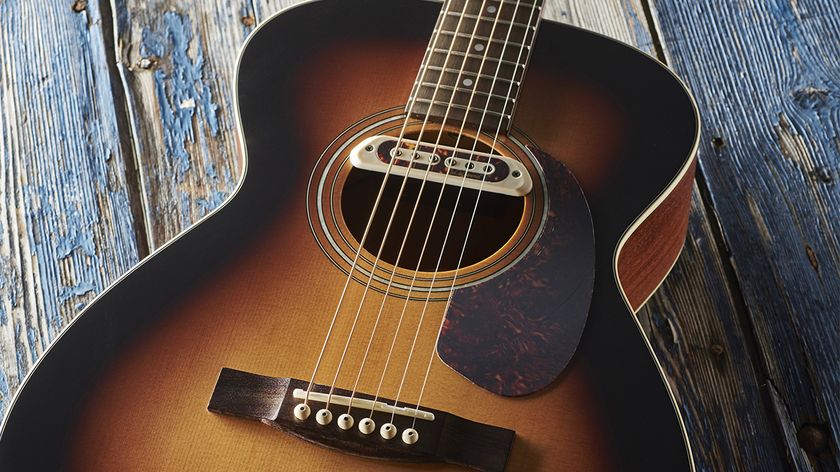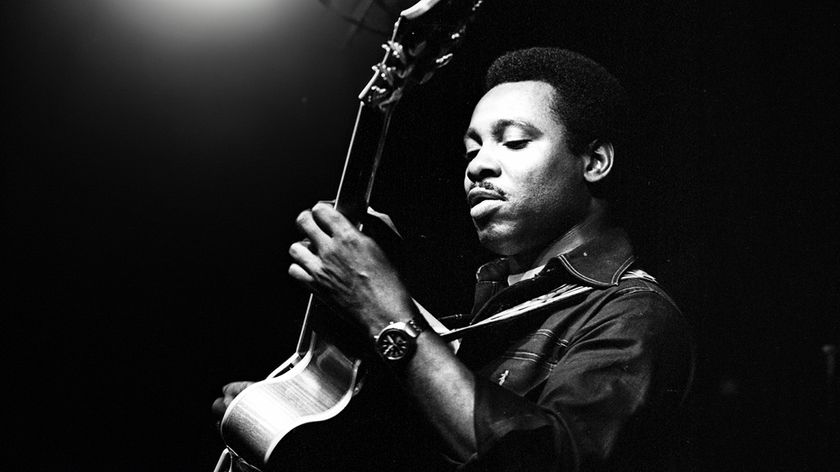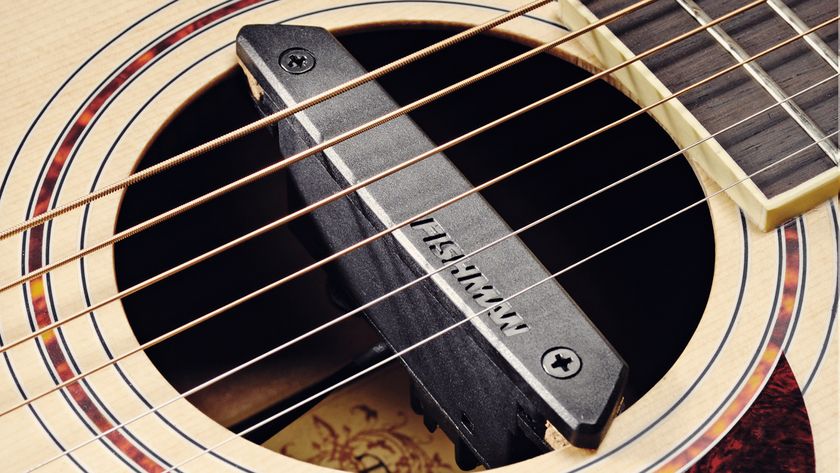60 Exercises to Improve Your Playing—Right Now!
60 exercises that can help you improve in all areas of your guitar playing—from fret work and picking to ear training and theory.
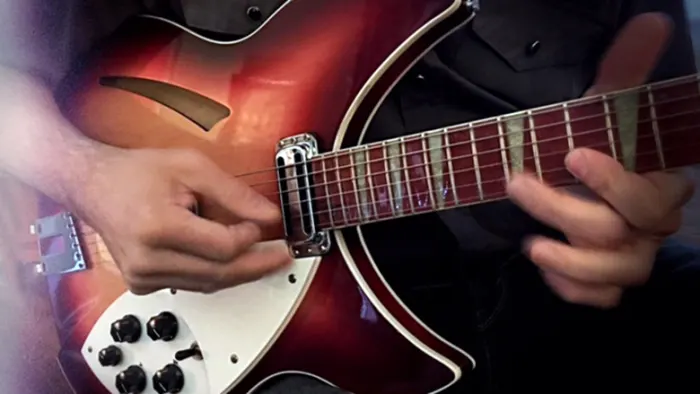
Wouldn’t it be nice if someone came up with a guitarist’s checklist of all the many little skills and techniques you should know and practice and have in your arsenal? You know, things like hybrid picking, unison bends, chord inversions, and the like?
And wouldn’t it be even better if everything on the list included a little lesson or drill to help you hone that particular thing?
You can’t say we don’t know a great idea when we hear one. That’s why we came up with this list of 60 exercises that can help you improve in all areas of your guitar playing—from fret work and picking to ear training and theory. They’re divided into 31 topics that make it easy to zero in on exactly what you want to work on.
You can go through this list from top to bottom, or just find the topics that suit your particular need at the moment. However you use these exercises, they’ll help you improve your skills and become a better and more well-rounded guitarist.
1. WARM UP
Before practicing or performing, it’s a good idea to run your fingers through purely physical exercises, such as FIGURE 1, measure 1, which attacks all four fret-hand fingers and requires strict attention to picking accuracy. Alternately, you could isolate your fret (measure 2) and pick (measure three) hands for independent warm-ups. The speed it’ll take you to become fully warm will depend on several factors, ranging from room temperature to how active you’ve been that day. Generally, the more regularly you practice, the quicker your hands will be prepared for intense playing.
FIGURE 1

2. PLAY FINGERSTYLE
Want a warmer sound for clean-toned licks? Or perhaps you want to play contrapuntal textures on your acoustic? Fingerstyle playing will help you do both. Traditionally, proper technique dictates that the thumb picks strings 4–6, while the remaining fingers pick the 3rd, 2nd and 1st strings (FIGURE 2A).
Also, when playing electric leads, try using your bare fingertips on the strings. You’ll get added tonal warmth, plus greater dynamics and more subtle nuances. Fingerstyle technique may also be used in a “pull and snap” style, with the index finger yanking and release a string so that it snaps back against the fretboard, creating a funky sound (FIGURE 2B).
FIGURE 2A–B

3. USE HYBRID PICKING
Often used as an alternative to fingerstyle playing, hybrid picking is a technique in which a pick replaces the pick hand’s thumb, while the middle, ring and (sometimes) pinkie fingers pluck the higher strings. Hybrid picking works particularly well with country-fried double-stop licks (FIGURE 3A), but it’s also useful for playing rock riffs (FIGURE 3B).
AUDIO: See the second half of the track in 2. Play Fingerstyle.
FIGURE 3A–B

4. ARPEGGIATE
For “making the changes” in an off-the-cuff solo, often nothing sounds more right than breaking up a chord—that is, articulating it as an arpeggio (FIGURE 4A). Whether you’re soloing over a jazz standard (FIGURE 4B) or shredding your way through a rock jam, arpeggios will open up your lines, make your phrases more melodious and help you bust out of the cursed pentatonic rut.
FIGURE 4A–B

5. USE HAMMER ONS
Is your phrasing busted? Working on legato techniques—hammer-ons, pull-offs and slides—will help to smooth it all out. For those new to these terms, a hammer-on involves picking a note and then depressing a higher note on the same string without picking (FIGURE 5, measure 1). Conversely, a pull-off involve pre-fretting a note, playing a higher note on the same string and then releasing the higher note with a flicking motion, thereby sounding the lower note (FIGURE 5, measure 2). Meanwhile, in a legato slide, a note is picked and then evenly slid—from above or below—into a second note (FIGURE 5, measure 3).
FIGURE 5

6. TAP THAT AX
Tapping licks are essential to an arsenal of flashy guitar tricks. The smooth sound of two hands hammering on the neck is also a dramatic departure from the percussive sound of a pick. In FIGURE 6, measure 1, an Em arpeggio (E-G-B) is arranged along the 1st string. Position your index finger over the fretboard, then tap (hammer on) the highest note. The notes following the taps are created by pull-offs from the tapping finger. Work on bend-and-tap maneuvers (FIGURE 6, measure 2) as well as pick-tapped slides (FIGURE 6, measure 3), and you’ll be a tonal badass.
FIGURE 6

7. ALTERNATE PICK
Alternate picking is the key to effectively tackling quick single-note lines, and it’s easier than it sounds.
If you can already play downstroked quarter notes at a brisk clip (FIGURE 7, measure 1), simply add an upstroke in between downstrokes to alternate-pick eighth notes at the same tempo (FIGURE 7, measure 2). Tremolo picking—picking notes in a measured, typically rapid fashion (FIGURE 7, measure 3)—would be nearly impossible without alternate picking. In general, for each note falling on a beat, use a downstroke. From there, strictly alternate between downstrokes and upstrokes. A passage of syncopated eighths, therefore, would be picked as shown in FIGURE 7, measure 4.
FIGURE 7

8. STEP OUTSIDE THE SCALE
If most of your lead lines are vanilla, it’s time to cram in some flavorful chromatics—notes outside of a given key, most commonly heard in country and jazz. Start by learning the chromatic scale (FIGURE 8A), which is composed of 12 notes, each a half step apart. Then, compare that to the seven-note C major scale (C D E F G A B). Finally, try making some lines in the key of C, using chromatic pitches as passing tones—that is, tones that connect the scales pitches (FIGURE 8B).
FIGURE 8A–B

9. SKIP STRINGS
Want to add some excitement to your playing? Try some string-skipping licks—patterns involving leaps between nonadjacent strings. FIGURE 9A depicts a rudimentary shred-style lick derived from a standard three-notes-per string fingering. FIGURE 9B shows the same concept, only with a less predictable melody.
FIGURE 9A–B

10. CUT YOUR PICKING IN HALF
Wouldn’t it be awesome to cut your overall picking activity by 50 percent? Try economy picking—using a single upstroke or downstroke to articulate notes on neighboring strings, as in FIGURE 10, measure 1.
Similarly, the arpeggio lick in FIGURE 10, measure 2, requires minimal picking motion. Articulate the first note with a downstroke, rest the pick against the next string, then push the pick through this higher string, continuing the motion until each string has been picked. To avoid sounding as though you’re playing a strummed chord, fret each note one at a time, releasing each before playing the next in line. Economy picking may also be used with scalar fragments featuring an odd number of notes per string (FIGURE 10, measure 3).
FIGURE 10

11. PRESS MUTE
Sick of hearing random open strings go “clunk” in the midst of single-note licks like the one shown in FIGURE 11A? Fret-hand muting is just what you need to clean up this crud. In FIGURE 11B, after you play the 6th-string notes, fret notes on the 5th string in a way that allows you to barely touch the 6th string with the tip of your 1st finger. This will prevent it from ringing open. Also, note that when you’re playing on the higher strings, you can mute the lower strings by placing your fret hand’s thumb over the top of the neck.
FIGURE 11A–B

12. NAME THAT NOTE
You can learn all the theory in the world, but if you don’t know where the notes are on the guitar, you’ll never really get those concepts off paper and into your playing. At the very least, strive to learn the equivalent of the piano’s white keys (the C major scale: C D E F G A B) on each string. Realizing that E–F and B–C are half-step intervals, find all the notes in the C scale first along the low E string, saying them aloud as you ascend/descend (FIGURE 12, measure 1). Too easy? Break them up in 3rds, say, on the A string (FIGURE 12, measure 2). Next, find these notes, one at a time, on all six strings, as in FIGURE 12, measure 3, and then try visualizing the notes within all of your C-scale shapes.
FIGURE 12

13. PUT YOUR THUMB IN ACTION
If you’re a classical guitar player who only uses your thumb for behind-the-neck support, or a rocker who uses it only for leverage while bending, it’s time you realize this digit’s full potential. For starters, try using your thumb to fret the 6th-string roots of certain chord shapes. This will free your remaining fret—hand fingers to grab chord forms on other strings—useful in R&B rhythm moves like FIGURE 13A. The fret-hand thumb may also be used in single-note passages to facilitate widely spaced intervals like those in the pentatonic riff of FIGURE 13B.
FIGURE 13A–B
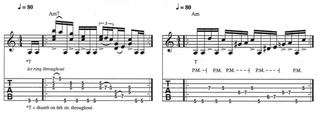
14. PLAY OCTAVES
Any melody that isn’t too complex, such as the one in FIGURE 14A, can be fattened with octaves—the same notes, but in a different register. In FIGURE 14B, this melody is played again, with an octave shape on the 5th and 3rd strings—fretted with 1st and 3rd fingers, respectively. To ensure that only the octave pitches ring out, arch your 1st finger so that its underside lightly comes into contact with the 4th string, thereby muting it.
AUDIO: See the second half of the track in 13. Put Your Thumb In Action.
FIGURE 14A–B

15. PUMP UP YOUR PINKIE
Chances are you play a lot of licks using only your fret-hand’s 1st, 2nd and 3rd fingers. Adding your pinkie to the mix will make certain things easier to play and facilitate a host of otherwise impossible fretboard patterns. To gain dexterity with your pinkie, you’ll need to strengthen it. Start by using it to finger basic, two-string pentatonic licks (FIGURE 15A). Then expand on these patterns using the pinkie to grab higher notes along strings 1–2. See FIGURE 15B for an example.
FIGURE 15A-B

16. ORNAMENT YOUR OPEN CHORDS
Sick of the same old cowboy chords? Try coloring them with tasty embellishments. In FIGURE 16A, an open C chord is decorated with hammer-ons and pull-offs drawn from the C major pentatonic scale (C D E G A). Keep each fret-hand finger depressed for as long as possible, allowing everything to ring throughout. Similarly, FIGURE 16B dresses up an open Em chord with notes from the E minor pentatonic scale (E G A B D).
FIGURE 16A–B

17. STUDY THE CLASSICS
Regardless of your style, you can gain much inspiration from learning classical guitar pieces. First, the chords (FIGURE 17A) of this style tend to be dispersed over a wide range, with more air between their notes than found in the dense barre chords of rock music. In addition, classical guitar compositions feature lots of counterpoint, such as contrary motion, in which lines move in opposite directions (FIGURE 17B). Put these ideas to work in your own writing and you’ll improve in ways you never though possible.
FIGURE 17A–B

18. TRAIN YOUR EARS
If you constantly hit unintended notes when improvising, try some ear training. Start with a common C-scale fingering (FIGURE 18A) and observe the intervallic relationships between each note and the tonic (C), shown in FIGURE 18B. Memorize the sound of each interval by associating it with a familiar tune—for example, the Star Wars theme begins with a perfect 5th—then jam over a C chord, improvising one note at a time.
FIGURE 18A–B

19. MAKE PERFECT BENDS
Unless your name happens to be Jeff Beck, chances are your string-bending skills could use a little improvement. At the heart of the matter is pitch accuracy. In other words, your bent note must hit the target pitch. FIGURES 19A–C offer some rather challenging exercises to help get your ears and muscle memory in sync.
FIGURE 19A is aimed at whipping your 1st finger into shape. The first bend is the all-important quarter-step bend to the ultimate blue note—the “Twilight Zone” area that lies right between the minor and major 3rds (in this case between Eb and E). Next comes a dead-on half-step bend to the major 3rd. The fretted E notes are reference pitches. Your quarter-step bend should end up a little flat by comparison,but the half-step bend should match perfectly. FIGURE 19B features a multiple-bend workout for your 3rd finger, and FIGURE 19C includes some pre-bend action. In all cases, make sure you lock on to the reference pitches.
AUDIO: See the second half of the track in 18. Train Your Ears.
FIGURE 19A–C

20. USE PARALLEL CONSTRUCTION
Here’s an interesting way to get more musical mileage out of your favorite scale patterns. It involves the mixing, or juggling, of parallel scale patterns—scales that share the same root.
On paper it seems easy enough, but when you get down to it, it can be difficult to execute smooth segues from scale to scale. Start by writing out every scale you know in one key and in one area of the neck. Get to the point where you can play up and down each scale (one time each, with steady eighth notes) without stopping, and work until you’ve finished the list.
The next step is to play up one scale and down the next until you’ve played all of them. The ultimate goal is to be able to switch gears from one scale to the next at any point in a pattern (FIGURES 20A–C).
FIGURE 20A–C
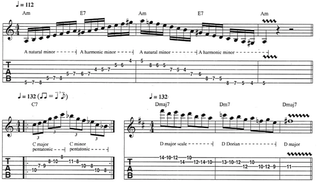
21. BREAK OUT OF THE BOX
If you’ve been looking for ways to expand on your minor-pentatonic licks, here’s an instant fix. Simply take any of your tried-and-true phrases and add a note that’s outside the scale, as illustrated in FIGURES 21 A–G.
In 21A, we start with an A minor pentatonic (A C D E G) blues-rock phrase. 21B modifies the phrase by inserting a B, for an Am9 quality. 21C has the original phase ending on an F#, which suggests an A Dorian (A B C D E F# G) tonality. 21D has an A Aeolian (A B C D E F G) vibe, thanks to the inclusion of a b6th (F). An added b2nd (Bb) implies the A Phrygian mode (A Bb C D E F G) in 21E; a maj7th (G#) provides some exotic sparkle in 21F; and a b5th (Eb) spices up an A blues scale lick in 21G.
FIGURE 21A–G


22. POWER UP YOUR POWER CHORDS
Embellished power chords not only make for interesting substitution but also come in mighty handy for riff writing. Check out the voicings in FIGURE 22 A–F. 22A depicts a standard E power chord (E5). 22B plops an F3 on top of the voicing, yielding an E5add9 chord (also referred to as Esus2). Power-chord add9 sounds are probably the most common substitute for power chords. If you’re more adventurous, check out the next few shapes. 22C places a D# in the voicing (E5add7) for a muscular chord that suggests Emaj7. 22D (E5addb7) suggests either an E7 or an Em7 chord. 22 E (E5add6) implies an E6, and the dark-sounding E5addb6 in 22F implies an Em(addb6) chord.
FIGURE 22 A–F

23. SHAKE YOUR CHORDS
Maybe the top players are trying to keep it a secret, but fret-hand vibrato can be as effective for sweetening chords as it is for shaking single-strings. Granted, it’s a challenging technique—you need to keep several digits in parallel motion as they wiggle up and down the neck—but it’s well worth the time spent woodshedding. Generally, the smaller the voicing, the easier to apply fret-hand vibrato. FIGURE 23 offers some shapes to get you started. Classical vibrato (involving back-and-forth rather than up-and-down motion) can also be effective when applied to chords.
FIGURE 23

24. PLAY THE GRACE CARD
Ever wonder why some guitarists can be so captivating even when they’re just playing a simple melody? Most likely they’re adept at the art of grace-note inflection. A legato technique that draws from a variety of slides, hammer-ons, pull-offs, bends and trills, grace-note inflections smooth out the “plunky” nature of the guitar while evoking the singing nature of the human voice. FIGURE 24 is a slow, graceful walk up the C major scale (C D E F G A B) that hits a variety of embellishments all drawn from upper or lower neighboring tones.
FIGURE 24

25. LIVE IN HARMONY
Here’s a way to double the impact of your melody lines: Harmonize them in 3rds and 6ths FIGURE 25A is a single-note melody drawn from the A natural-minor scale (A B C D E F G); 25B adds a harmony part a diatonic 3rd below the original melody line. 25C spreads it further apart with diatonic 6ths—use hybrid picking for this one, while 25D places a harmony above the melody, requiring a shift in position.
FIGURE 25A–D


26. BEND IN UNISON
The next time you need an ingredient to thicken your solo soup, try a dash of unison bends. Played along either one of the top two string sets, a unison bend requires that the lower string be bent to match the pitch of the higher string, Check out how unison bends spice up an otherwise bland ascension through the E Dorian mode (E F# G# A B C#) in FIGURE 26.
FIGURE 26

27. KICK FOUR TO THE FLOOR
Here’s a rhythmic idea that alleviates the predictability of common scale sequences. In FIGURE 27A, you’ll find the popular “groups of four” sequence applied to the C major scale. Since this is a four-note sequence, it’s usually cast in duple (divisible by two) subdivisions such as eighth notes and, as it is here, 16th notes. But when you recast the same sequence into a triplet subdivision (FIGURE 27B) it sounds less predictable. FIGURES 27C-D apply this process in reverse, taking a sequence based on triplets (harmonized triads from C major) and converting it into a duple subdivision (here, 16th notes).
FIGURES 27A–B

FIGURES 27C–D

28. FLIP THE SCRIPT
The better your comprehension of triads and their inversions, the better your chances of unlocking the many mysteries of the fretboard. Here’s a hands-on exercise for practicing major-triad inversions. FIGURE 28 maps out I, IV and V triads in the key of C, in three sections of the neck. Each group contains all three possible voicings of major triads. Get to know these shapes by practicing them in I-IV-V combinations in all keys. Once you have that down, move on to the next string set (FIGURE 28B). And when you’ve mastered the major-triad drill, apply it to the minor triads (I-bIII-V).
FIGURE 28A–B

29. OPEN YOUR OWN BARRE
FIGURES 29A–G reveals the often sparkling results of “opening up” standard barrre-chord shapes. The first two shapes here are stock A and B barre chords, but with the index finger lifted to allow the open high E and B string to ring out. Next, we have a Dmaj7 shape with the top two strings released, followed by a Dm7 shape with the open G and high E strings sounding. Similar procedures are used in the construction of the remaining voicings. Use these shapes to kickstart your imagination.
FIGURE 29A–G

30. TUNE THINGS UPSIDE DOWN
Alternate tunings are great remedies for musician’s block. Here’s a quick primer for some of the most popular alternate tunings. Tune your low E string down a step, to D and you’ll be in drop D, which affords massive-sounding power-chord voicings (FIGURE 30A), while allowing you to “think normally” on strings 1–5. Drop strings 1, 5 and 6 down a whole step each, and you’ll be in open G (low to high, D G D G B D). Rolling Stones guitarist Keith Richards often uses this tuning, playing movable voicings like those in FIGURES 30B–C. Inspired? How about DADGAD tuning? Get a groove going with the D-chord voicings in FIGURE 30D and intersperse lines carved from the symmetrical scale pattern in FIGURE 30E. If you’re feeling really adventurous, try the same process with the open C (low to high, C G C G C E) chord and pattern found in FIGURES 30F–G.
FIGURE 30A–G

31. IMPROVE YOUR RELATIONSHIPS
A surefire way to improve your improvisational chops is to practice the chord-scale relationship method, which involves treating a progression’s chords as separate entities and using a different scale for each. The first step, of course, is to learn which scales align with which chords (Cmaj7 chord = C major scale; Em7 chord = E natural minor or E Dorian, etc.) Next, you’ll learn to play patterns of those scales. The ultimate goal is to be able to place the proper scale pattern over any chord. FIGURES 31A–D offer a series of drills designed to get you headed in that direction.
FIGURE 31A–D

Get The Pick Newsletter
All the latest guitar news, interviews, lessons, reviews, deals and more, direct to your inbox!
Guitar Player is the world’s most comprehensive, trusted and insightful guitar publication for passionate guitarists and active musicians of all ages. Guitar Player magazine is published 13 times a year in print and digital formats. The magazine was established in 1967 and is the world's oldest guitar magazine. When "Guitar Player Staff" is credited as the author, it's usually because more than one author on the team has created the story.

"It’s like you’re making a statement. And you never know where it’ll lead." Pete Thorn shares the tip that convinced Joe Satriani he was the right guitarist for the SatchVai Band

"This is something you could actually improvise with!" Add vibrant rhythms and sophisticated chords to your guitar playing with Jesse Cook’s five essential flamenco techniques


